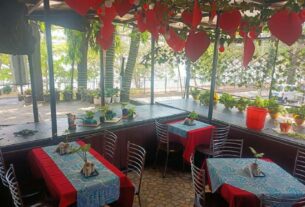Sustainability encourages younger generation in Bengaluru to move towards Indian handloom.
The museum going crowd in the city are increasingly taking up short-term certificate courses on textiles which are seeing a rise in enrollments. However, fashion design and handloom academies in the city are yet to catch up on this trend, as so far only museums in the city are offering such courses.
Museums like Museum of Art and Photography (MAP) and The Vimor Museum of Living Textiles, have started short-term courses and workshops on textiles. These courses help people who are interested and curious about Indian textiles and its history in learning the basics of textile production.
With no age bar, these short-term courses and workshops have seen an increase in response from participants. MAP academy’s website states, they have received over 1900 enrollments since the starting of their online courses from June, 2022. This 3 to 3.5 hours long course is framed by the research and editorial team of the MAP academy, that focuses on making people familiar with the basics of textile production from Indian subcontinent. The online certificate course is provided for free.
Apart from free online courses, museums like Vimor provide in-person paid handloom textile production workshops for those interested. Pavithra Muddaya, Managing Director and Trustee of The Vimor Museum of Living Textiles in Bangalore said, “We offer urban weavers’ workshop which is a four-to-six-day session wherein we teach the participants to weave basic stoles by hand.”
Vimor also provides space for interactions amongst designers, weavers, and students with respect to growth and conservation of textile tradition in India. Pavithra added that they also conduct story telling workshops with small children on topics like discussion about their grandmother’s saree.
Pavithra said that they have been having a steady number of enrolments. This helps them ensure that the course is able to help the interested participants to understand the basics of handloom within a short period of time.
Despite people being interested in learning about ancient Indian textile, universities have not yet added such courses in their curriculum. Utkarsha Gokhale, a student final year student of National Institute of Fashion Technology, Bangalore said, “Our college does not provide short-term courses, I think we only have courses with a minimum duration of six months, but they are related to designing and development.”
Shubhangi Kumar, fashion designer from Noida said, “Short-term certificate courses need to be popularized in colleges and universities irrespective of the streams. This will help in preserving traditional methods of producing textiles and boost Indian culture amongst the younger generations.”
For people who are interested in textile designing do not wish to pursue a professional career in it, short term courses provide the basic knowledge of textiles, prints and their ancient roots instead of getting into the details as included in the academic curriculums, stated Utkarsha.
These courses also help visitors of museums who are not interested in textile or handlooms to learn about the process. “One of the best ways to curate interest related to traditional art is through museums,” said Shubhangi. The visitors interact with the artefacts in the museum and enrol in workshops and courses to know more.
Back to the roots
“Today’s young generation is interested in being rooted in Indian culture and are curious to know where the indigenous systems have come from,” states Pavithra.
Haimanti, a final year Masters student of Textile designing and handloom industry, doing her graduation project at Vimor said, “India has a lot of variations in textiles. We get region-specific textiles and materials in our country given its different cultures. I have taken up this course as there are a lot of things yet to be known and explored.”
People find it easy to relate to a brand when its style is familiar to Indian culture. Shubhangi said that fashion designers like Rahul Mishra make use of designs that have been influenced by India in terms of looks as well as its production; this technique has helped artists like him gain more popularity.
Utkarsha Gokhale, working as an intern at Vimor said, “We see a lot of people and home brands have been making use of ancient textile styles in fanny packs, such designs are now called vintage.” She added that hand-woven jackets, oversized shirts, tote bags, are being designed using ancient textile designs. “This has helped in promoting hand crafted designs all over the world, which is a huge change that has been coming up now,” added Haimanti.
Reconnecting with ancient style has become the new “cool” say the interns working at Vimor. Utkarsha adds, “Now-a-days, we see the techniques of tie and die which have become quite popular. But this style on t-shirts and hoodies is not new it is adapted from block paintings and Rajasthan’s bandhani.”
When traditional methods are used in the production of new and trending styles of clothes, it encourages the handloom industry. It also helps people in becoming more conscious about what they are wearing. Haimanti said, “The popularized use of indigenous techniques in making handcrafted products has promoted sustainability and brought in a new trend of recycling and upcycling in fashion.”
Pavithra added that since sustainability has become essential, the millennials and Gen Z “are rethinking what they wear and do not want to wear what comes out of a machine. Handloom is becoming popular as it uses natural fiber, creates livelihood, saves nature and preserves culture.”



